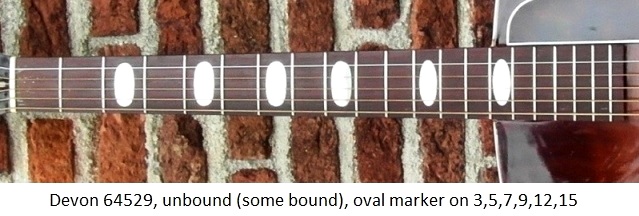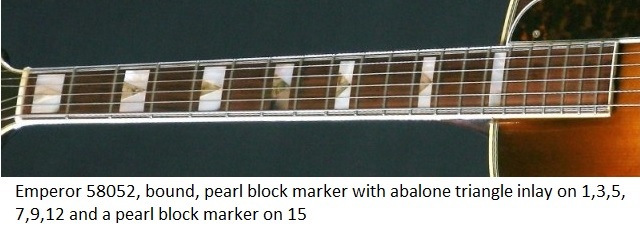Epiphone used rosewood on all instruments as their fingerboard material, with the exception of ebony on some early Emperors. The fingerboards had a curved radius and were set with twenty high-nickel-content silver frets. The inlay varied according to model from simple dots to the elaborate “cloud” pattern on the De Luxe or “V-block” on the Emperor.
Wiedler wrote us October 2017 : “On examples in my database the curved fingerboard end seems to have been standard on early Masterbilts. In 1934 square-end fingerboards seem to have become standard – the transition happened around the 75xx serial number range. There are a few pre-1934 instruments with a square-end board, however we don’t know if they left the factory before 1934 with this feature.“
Lower models had unbound boards while upper models featured white Pyralin binding. Side position dots appeared at each fret which contained an inlay, white dots on unbound necks and black dots on bound necks. Scale length on all models was 25½ inch.
NOTE: Epiphone guaranteed “All models for the life of the instrument” (cat. 1932), but “metal and other parts that recieve wear, excepted” (cat. 1934), since they don’t last such a long period. Therefore, many of the historic guitars most likely don’t have their original frets anymore.
References :
Jim Fisch & L.B. Fred, The House of Stathopoulo, 1996, p. 74,75
Felix Wiedler, NY Epi Reg
Ruurd Feitsma, The Tale of Benny Jackson’s De Luxe (De Luxe 5794)



































